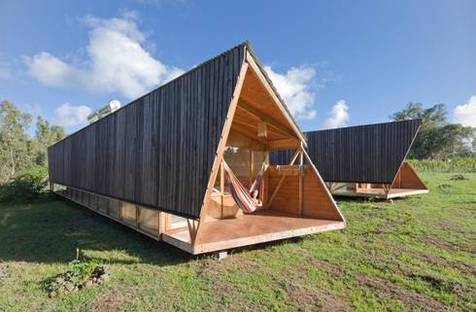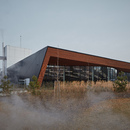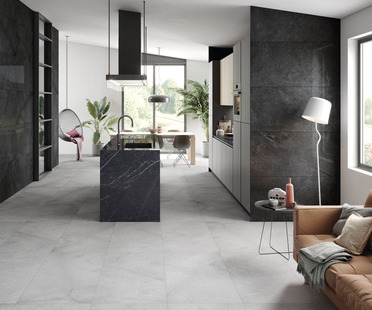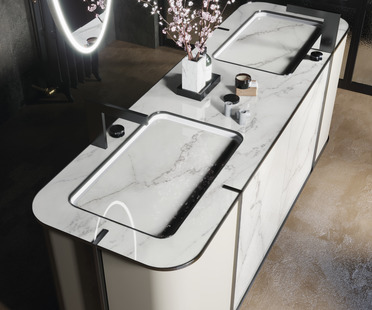- Blog
- Sustainable Architecture
- A sustainable tourism project on Easter Island
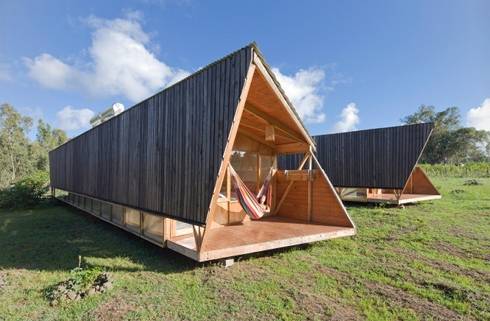
This is not your classic hotel: visitors stay in family-sized huts where they can live according to their own rhythms and those of their environment, with no limitations. The Cabañas Morerava complex includes 4 huts measuring about 60 square metres each, plus another 17 square metres of covered patio, an extension into the complex’s natural surroundings without interfering with other guests’ privacy.
To avoid harming the particularly delicate ecosystem of Easter Island, the architects of AATA opted for huts made out of parts prefabricated on the continent, optimising use of the primary building material: timber.
The huts rest on poles to limit their impact on the land and prevent humidity from penetrating their interiors. The subtropical climate of Easter Island makes thermal insulation unnecessary. A gap between the wood of the ceiling and the zinc roof permits free circulation of air and natural cooling, further encouraged by the huts’ orientation, providing cross ventilation and optimal interior lighting.
A system for collecting rainwater meets the water requirements of the garden and only if this water runs out is water from the aqueduct used: a precious resource scarce on the island.Water is heated by solar collectors positioned on the roof of each hut, so there is no need to use non-renewable energy. These solutions, which all work without electricity, play an important role in reducing the “carbon footprint” of the entire holiday complex. Electricity on Easter Island is produced by a power plant burning diesel brought in by tanker ships, and by not relying on this energy source the complex saves the pollution created by transporting diesel fuel. For now, the cottages are attached to the grid but there is a project to make them indipendent.
AATA Arquitectos has built sustainable holiday facilities which minimise environmental impact while impressing visitors with their visual impact and harmonious inclusion in their surroundings, offering further proof that it is possible to enjoy a “green” holiday, even in paradise on earth.
Design: AATA Arquitectos, http://aata.cl, – Nicole Gardilcic V., Sebastián Cerda Pé
Location: Hanga Roa, Isla de Pascua, Chile
Client: Cabana Morerava, http://www.morerava.com
Construction: Alejandro Martinez Z.
Project surface area: 77 m2 (for 6 people)
Year: December 2009 – July 2010
Photographs: Sergio Pirrone










